Britain’s ‘most dangerous plant’ strikes Paisley as woman is left with painful burns to her arms after accidentally brushing past giant hogweed
A mother was forced to leave work after a brush containing ‘Britain’s most dangerous plant’ left her hand covered in horrific blisters.
Kelly Sherry, 41, developed an irritation in her hand and wrist shortly after walking her dog in Paisley, Scotland.
The next day, her skin developed painful blisters, forcing the holistic therapist to cancel client appointments.
Now it appears the dreaded giant hogweed was to blame – and the dangerous sap reached her without her even touching it.
She said: ‘There was no flowering hogweed visible so I assume this is due to petting another dog or cleaning my own dog after her walk.
Kelly Sherry, 41, was forced to quit her job after contact with ‘Britain’s most dangerous plant’ left her hand covered in horrific blisters
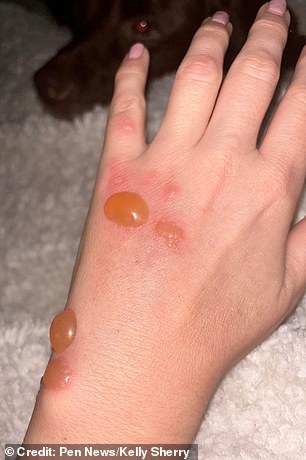
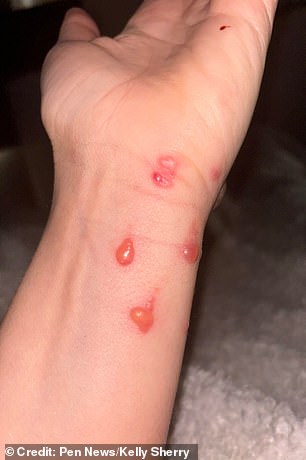
Kelly developed irritation in her hand and wrist shortly after walking her dog in Paisley, Scotland
‘About 10 minutes after I got back from my walk, my sleeve while driving felt like it was irritating my wrist and hand, which shortly after started to turn red.
“It was like a burning sensation, like a friction burn.”
She continued, “As the day went on it became more intense.
‘After I washed again and applied some Bepanthen to ease the pain, the skin started to look like burns, as if I had sprayed it with hot oil from a frying pan.
‘Some spots were larger than others and showed signs of blistering.
‘By morning all the blisters had worsened and it was very painful to even move the hand or touch anything.’
Kelly’s doctor prescribed a course of antihistamines, along with steroid cream and antibiotics – and they told her her hogweed was to blame.
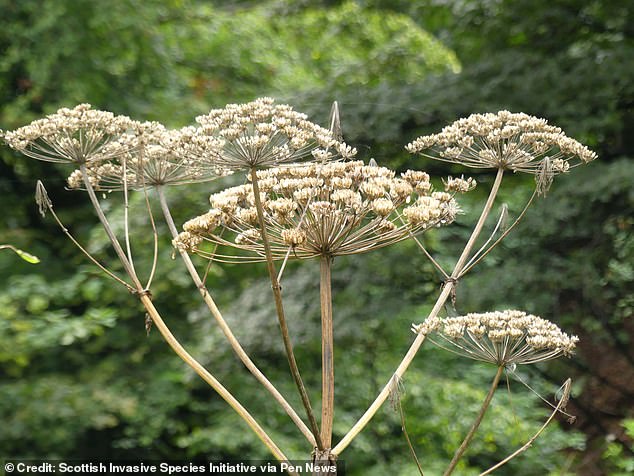
It seems the dreaded giant hogweed was to blame – and the dangerous sap reached her without her even touching it
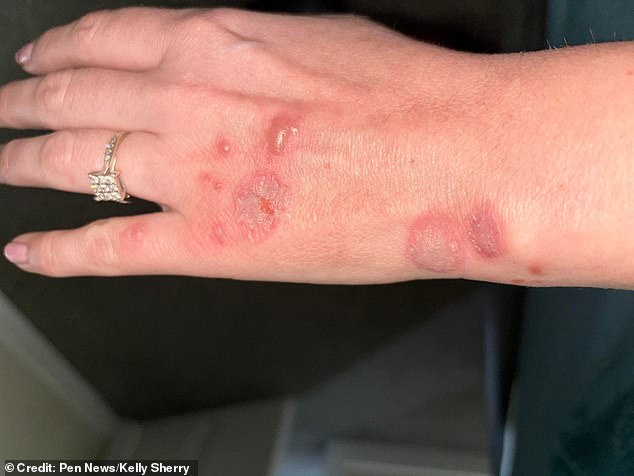
Kelly’s doctor prescribed a course of antihistamines, along with steroid cream and antibiotics – and they told her her hogweed was to blame
Britain is home to common hogweed – a native species – and its invasive cousin, giant hogweed.
The latter contains a sap that prevents the skin from protecting itself from the sun’s rays, causing horrific burns when exposed to natural light.
To make matters worse, it often causes no immediate pain, meaning victims can continue to burn during the day without regard to any problem.
Callum Sinclair, project manager at the Scottish Invasive Species Initiative, confirmed that giant hogweed was the most likely culprit behind Kelly’s injuries.
And he warned that the juice’s nasty effects could last for years.
He said: ‘Our opinion is that these are giant hogweed burns based on the blistering seen in the photos.
‘Giant hogweed plants will still be quite small at this time of year and so – unless the lady has had direct contact with them – there is a good chance that the contact has been through a third party.
‘These burns are likely to leave marks and these may become worse, or become itchy and irritable when exposed to strong or direct sunlight.
‘So she may have to keep the skin covered for a while; this reaction to light can last for several years.’
A week later, Ms Sherry’s blisters have burst – which she described as ‘the worst pain’ – and she is still in pain.
Moreover, the injuries cost her money.
She said: ‘It was very difficult, not only because it was ugly and very painful, but I couldn’t do my job as a complementary therapist.
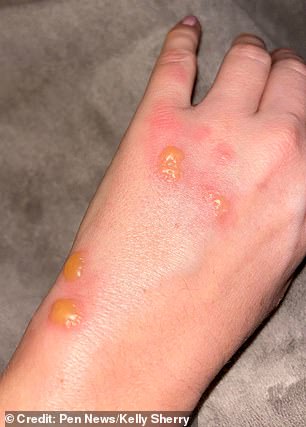
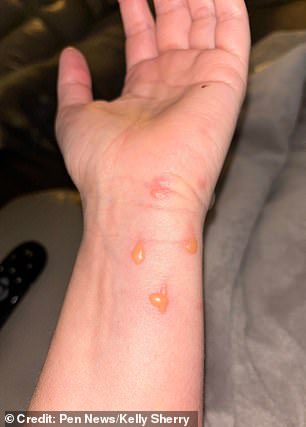
Callum Sinclair, project manager at the Scottish Invasive Species Initiative, confirmed that giant hogweed was the most likely culprit behind Kelly’s injuries
‘It’s my own business, so I lose income because I have to use my hands to perform treatments and have to cancel appointments until I’m healed.’
She is now urging others to be vigilant around the plant and act quickly if they touch it.
She said: ‘Make sure you change and wash not only your hands but also the arm/wrist area as soon as possible.
‘Be vigilant and inform everyone if you see it, and make children aware of the dangers too.
“I’m glad it didn’t come into contact with my eyes because it can make you go blind.”
Giant hogweed is native to the Caucasus but was introduced to Britain as an ornamental plant in 1817 and its spread has now gotten out of control.
Mike Duddy, of the Mersey Basin Rivers Trust, said in 2015 that giant hogweed was ‘without doubt the most dangerous plant in Britain’.
